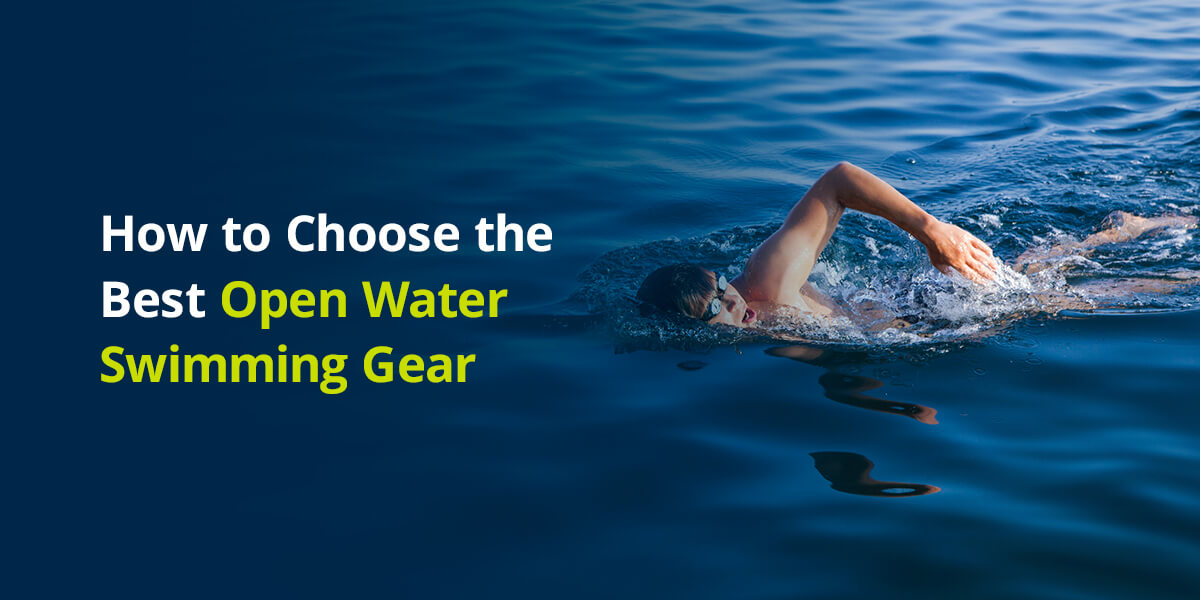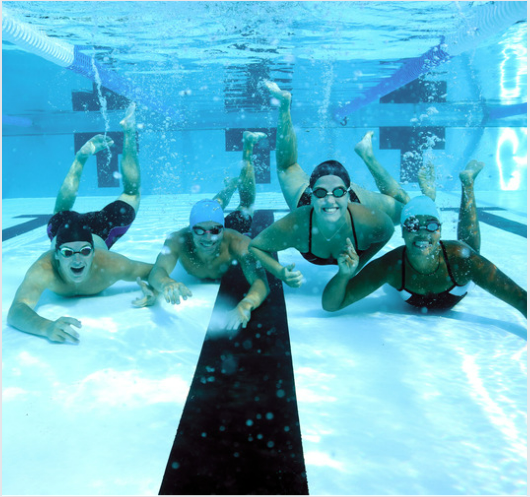How to Train for Your First Triathlon

Gear Advice, Triathlon, Swim Gear
|
May 19, 2022
What Gear You'll Need
The three events you'll see in a triathlon are swim, bike, and run, typically in that order. Each leg will require different equipment to ensure your success.Swimming Gear
You'll need a triathlon suit or kit that you can wear during every event to avoid needing to change during the race. A triathlon suit is a one-piece, and a kit is a top and bottom combo. This apparel is fast drying, reducing chafing and allowing for a more comfortable bike ride following the swim. You won't take these clothes off at all during the event. However, you could decide to wear a wetsuit as a top layer for enhanced speed in the water and take it off before hopping on your bike. You may also want a pair of shorts to put on over your triathlon suit or kit for a more comfortable cycle. For the rest of your swim gear, you'll need goggles, and you may decide on a swim cap or ear or nose plugs. Your goggles will enable you to keep your eyes open underwater and can help protect against harsh sun rays and increase your peripheral vision. You could buy your swim cap to ensure it's comfortable and get experience training with it, but most races will provide these for you. Ear or nose plugs will keep water out and make for a more enjoyable experience.Biking Equipment
For success in the cycle event, you'll need a durable bike. This will be the most expensive item you need to prepare, but how much you should spend will depend on how often you intend to compete. If you want to participate every summer, finding a triathlon bike would probably be best. However, if competing is a goal you only feel the desire to complete once, you could choose to purchase a road bike which will save you some expenses. You can also rent a bike for training and race day if you don't plan to use it outside of competing. You should always wear a helmet when cycling, especially in events where you're pushing yourself. To ensure a clean, safe line of vision, find a good pair of sunglasses that will help reduce eye strain and keep bugs or debris from entering your eyes. If you're looking for other minor upgrades, you could invest in a saddle, which will make your bike seat more comfortable, or cycling shoes with pedals, which will further connect you to the bike and make upward pedaling much easier.Running Materials
To prepare for the run in the triathlon, you'll need to invest in a quality pair of running shoes. Although you can purchase shoes online, you should look for a pair in stores. Before purchasing, it's best to walk around to ensure you get a good, comfortable fit. You may also want to consider your socks. Most returning triathletes don't wear socks because when socks get wet, they can cause blisters. However, most beginner triathletes do wear socks. If you plan to compete sock-less, you should spend some time training sock-less. You want to avoid trying a new strategy on the day of the event to decrease the likelihood of injury. If you opt for socks, you might want to consider finding a pair of running socks.Triathlon Training Plan
To create a successful beginner triathlon training plan, you'll need to determine how well you already perform in the three categories. Usually, training for 12 weeks before the event is sufficient, but if you're starting from scratch, you may want to begin training about 16 weeks before the race. If you don't know how to swim, you'll want to find instruction through your gym, community pool, or another recreation center. Training for the biking or running legs doesn't require intense sprints. A 45-minute bike ride will get you comfortable with the mechanics and get your body used to the seat and handlebars. When training for running, you could walk, jog, sprint, or combine these. You just want to get in the habit of getting that movement. You don't need to hire a coach for a sprint triathlon. However, if you want someone to keep you accountable or offer tips for competing, there's plenty of help available through friends, family, or triathlon coaches. When creating a training plan, you want to incorporate two days a week for each event and one day where you go for a long bike ride and immediately perform a short run. You should switch up your intensities and always be sure to give yourself a rest every once in a while. For example, here's a one-week sample training program:- Monday: Swim for 30 minutes
- Tuesday: Bike for 40 minutes
- Wednesday: Run for 30 minutes
- Thursday: Rest
- Friday: Swim for an hour
- Saturday: Bike for 45 minutes, then run for 15 minutes
- Sunday: Pilates
The Top Triathlon Training Tips
Whether you're great at one leg or just starting for all three, it's essential to train for every portion. You will want to focus more on legs that you are unfamiliar with, but performing an activity that you enjoy will give you something to look forward to and help you stick to your training schedule. Here are our top triathlon training tips:- Cycle or run with someone else to evaluate your pace. If you can't hold a conversation, you need to slow down.
- Swim in open water if that's where the event will take place.
- Practice biking at high intensity and low intensity. Determine which is best for you to maintain a constant speed throughout the event.
- Train on a stationary bike if you're not comfortable training on the open road.
- Wear your triathlon running shoes during training to break them in.
- To build stamina, run for a minute and then walk for a minute. Increase these intervals by one minute once you feel you're ready.
- Practice on the course if the race is in a nearby area.
Preparing for Race Day
To prepare for race day, you should attend the course talk. This talk covers any rules or course changes and lets you know how long you have to prepare your equipment. You'll also be able to address any questions with the race director at this time. Here, you'll receive a race packet that includes all the information you need to know about the event, including rules, parking, start time, and more. Get ready for race day by having all your clothes and equipment prepared the night before. Make sure your morning alarms allow time for a healthy breakfast and account for travel time. The most important thing to remember on race day is to have fun. This is something you've been training for, and the experience will be incredible. Focus on one leg at a time. Once you finish, focus on the next. Of course, make sure you congratulate yourself for all of the hard work you've put in and spend time reflecting on your accomplishment.Get Your Swimming Gear From Kiefer
Kiefer Aquatics has been operating for over 70 years, giving us in-depth knowledge about the industry that you can't find anywhere else. Founded by an Olympian swimmer, we're proud to continue offering high-quality swimwear, gear, and equipment. We strive to satisfy our customers every time, and we're proud of our team and commitment. With customizable options, you can be sure that you compete in your triathlon in style and comfort. You can count on us whether you need a quality cap, anti-fog goggles, or swimming workouts to prepare for your triathlon. Shop Kiefer Aquatics swim gear for everything you need to swim.Learn More About Competitive Swimming:
- Training for A Triathlon? Here’s the Gear and A Workout Plan to Help You Prepare!
- Why Every Swimmer Needs A Finis Tempo Trainer
- My First Triathlon
- What To Pack In Your Swim Meet Bag
- 5 Ways Swimmers Self-Sabotage
- Summer Swim Training: 5 Tips To Keep It Fresh!
- The 7 Habits of Highly Effective Swimmers
- Raising a Swimmer – Part II: 11-12 Years







Leave a Comment
Your email address will not be published. Required fields are marked *